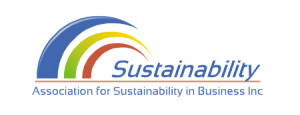It was a soil bacteria course in New Zealand that convinced Reggie Davis to change his farming methods.
The fourth-generation Victorian dairy farmer had become increasingly concerned by the costs, chemicals and time involved in the use of nitrate fertilisers to maintain – what was considered to be – high-quality pasture for his dairy herd.
So when his dairy herd nutritionist mentioned that the US biological farming advocate Dr Arden Andersen was running a soil management course in New Zealand, Davis decided to go. He asked around to see if any neighbours might be interested. Within weeks, 40 other dairy farmers from Victoria’s south-west had signed up for Andersen’s course.
That collegiate interest in investigating new farming methods is reflected in figures published by the Australian Dairy Industry Council in its annual sustainability performance review.
According to the 2015 report, 75% of Australia’s dairy farmers recycle water, 60% have sustainable farm management plans and 45% have invested in biodiversity management and conservation planning.

Dairy farmers have also set a national target to reduce industry greenhouse emissions by 30% by 2020, and have already cut emissions by 15% – largely through energy audits of dairy machinery and farm equipment.
The report says dairy farmers want to create “a carbon-confident industry” and various software has been created to help to calculate and reduce farm emissions. These include the dairy climate toolkit and the dairy greenhouse abatement strategies calculator.
There are some industry leaders. Bega Cheese, one of Australia’s biggest dairy product manufacturers, launched a sustainability program in 2014, which led to a $50m investment in environmental initiatives. The company offers climate change adaptation advice for farmers, supporting programs to plant trees for shade and shelter.
Similarly Burra Foods, a dairy processor and exporter in Victoria’s south Gippsland region, has recovered 60m litres of water a year from the evaporating process used to produce powdered milk. It has also cut its town water consumption by 20% and expects to make a further 25% reduction by 2017.
There are dozens of similar stories across Australia’s dairy industry, which is the country’s third biggest rural industry after beef and wheat. It’s a $13.8bn industry that employs more than 39,000 people on farms and in manufacturing, and an additional 100,000 in related occupations such as dairy research and veterinary services. So if dairy takes a hard hit, regional economies will certainly feel it.
The current dairy crisis is taking its toll. In April the processing giants Murray Goulburn and Fonterra announced cuts to farmgate prices paid to dairy farmers for milk. Murray Goulburn announced the cuts would be retrospective, which meant famers will be forced to pay back about $200m over the next three years. For most farmers, that will average $300,000.
Both the Australian Competition and Consumer Commission and the Australian Securities and Investments Commission are investigating Murray Goulburn but many farmers face financial ruin or the possibility of years of debt. It seems a particularly cruel blow for an industry in which the majority of farmers have been prepared to commit to sustainable farming practices.
Reggie Davis is a good example. One of the reasons he decided to take a closer look at biological farming methods was to avoid using chemical sprays to control pasture pests. He’d noticed the lush growth produced by nitrate fertilisers attracted insects such as red-legged earth mite.
These are a devastating pest, and controlling an infestation is costly. As well as the price of sprays, and possibly hiring a professional spray crew, farmers may have to buy supplementary fodder for their cows while the affected pasture is treated. The CSIRO estimates the mites, which were introduced from South Africa in the early 1900s, cost Australia’s farmers more than $500m a year in lost production.
The Davis family run 600 Friesian cows on their 570-hectare property near Camperdown in south-west Victoria. They’re one of five farming families in the region who have formed a group called the Green Pastures Movement to practice and promote sustainable farming.
The famers worked with a local company, Camperdown Compost, to set up a system of compost rows to turn straw, sawdust and cow manure into natural farm fertiliser. It’s a big operation that requires a heavy-duty mechanical compost turner, towed by a tractor, to periodically turn the compost windrows.
The Davis farm produces about 2,000 tonnes of compost each year, and this is applied to pasture in autumn at a rate of about one tonne to the acre (or half a hectare). “We’ve seen a lot of positive changes with our soil health and our cows,” Davis says. “And people tell us that our milk tastes better.”




